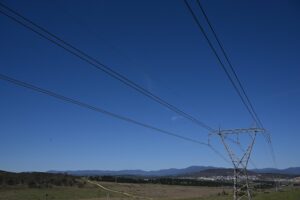Australian governments have agreed to raise the bar on energy efficiency standards for new-build homes, in a long overdue move to improve basic living standards and to tap into one of the easiest and lowest-cost means of driving down household energy bills and emissions.
In a meeting on Friday, state and federal building ministers agreed to update the National Construction Code (NCC) to require new residential dwellings to achieve the equivalent of 7-stars on the Nationwide House Energy Rating Scheme (NatHERS).
The changes to the NCC will also introduce a “whole-of-home” energy budget for fixed appliances like hot water, heating, cooling and pool pumps.
But the main focus will be on ensuring new homes are heated and cooled more effectively and efficiently, a move that is expected to help save the average household around $600 a year on their energy bills.
Encouragingly, the new provisions will also mandate that all apartments and some commercial buildings are built to allow EV charging capability in all car spaces and rooftops that are able to support solar PV retrofits.
The boost to the energy efficiency standards, the first in more than a decade, follows three years of lobbying led by the Australian Building Codes Board (ABCB).
But it marks just the first step in bringing Australia up to par with most of the rest of the developed world on thermal efficiency in homes, and leaving behind its shameful reputation for having double the rate of people dying due to cold weather as Sweden.
According to Renew, which also lobbied hard for the changes via its Climate Resilient Homes campaign, the boosted energy standards could cut emissions by up to 78 million tonnes and lower the cost of grid upgrades by up to $12.6 billion by 2050.
The key changes are the adoption of a minimum 7 star rating – up from 6 stars – which, according to a communiqué from the building ministers’ meeting, will combine elements like better insulation, higher quality glazing and smarter floor plans.
The introduction of an annual energy use budget, meanwhile, will require consideration of the efficiency of the appliances used in new homes and the addition of such technologies as rooftop solar and battery storage.
“Ministers recognised that overall these changes will improve amenity and drive down energy bills in new homes,” the communiqué says.
“NCC 2022 will also deliver a new livability standard to increase the stock of homes with accessibility features and support Australians with mobility limitations to transition through life stages in their own homes.’
And while the boost to Australia’s energy efficiency standards is being welcomed as an historic win, industry and green groups stress that there is plenty more room for improvement – including the elimination of gas appliances in new homes.
“Renew has found that building 7-Star homes with solar and no gas can cut bills by over $1000 a year,” said the NGO’s CEO Fiona Gray.
“With energy prices rising, there’s never been a more important time to tackle bills – and we can do it by making our homes more efficient and powering them with renewables.
“Smarter design in the way we build our homes will make the transition to renewables faster and cheaper,” Gray said.
“New 7 star houses need less energy to stay comfortable, meaning a win for households and a win for the climate,” said Energy Efficiency Council chief Luke Menzel.
“This is the first step in the trajectory towards houses that are ready for net zero. There’s more work to be done in making sure Australians are housed in affordable, energy efficient and climate-safe buildings – but we know it’s a challenge we can meet.”
Lobby groups also stressed the importance of a clear timeline for the implementation of the new energy efficiency standards, with the EEC warning that a “piecemeal” approach will see homeowners in some jurisdictions short changed.
According to the ABCB, building ministers agreed to publish the full and final version of the amended NCC from October 01, with the majority of states and territories committing to bring it into full effect from May 01, 2023, to allow industry time to adjust.
The ministers also agreed to allow for transition periods for specific requirements and jurisdictions, allowing some of the provisions of NCC 2022 to be considered voluntary until a set future date – in one case, as far ahead as 2025.
“We know it’s a difficult time in many industries, with rising prices and uncertainty. But improving the energy efficiency of our buildings is one of the fastest ways to reduce emissions and combat high energy bills, and we can do it right now.” the EEC’s Menzel said.
“Ultimately, householders will lose out through a lack of action on energy efficiency – through higher costs of living and colder houses. We urge those Ministers to act to improve the energy performance of new homes as soon as possible,” he added.
“There is no time to lose,” said Renew’s Fiona Gray. “We’d like to see the implementation period actioned as fast as possible so that households aren’t missing out on quality, affordahave been ble, low-emissions homes.”
Queensland’s energy minister Mick de Brenni conceded it would have been “great” to have introduced the new measures sooner, but said industry “deserved adequate time” to adjust.
“The national construction code has also been restructured and entirely renumbered,” de Brenni said in a statement on Friday.
“The changes are substantial and we believe the extended time frame is a fair and balanced outcome.”
Victoria’s energy minister Lily D’Ambrosio said her state was already leading the way with energy efficient homes, having dedicated funding and set new statewide targets in late 2020.
“This new national standard will see more households save hundreds in bills as we shift to a net-zero emissions economy,” D’Ambrosio said.
New South Wales, meanwhile, released its own separate “nation-leading policy” on energy-efficient homes and buildings on Monday, with rules encompassing commercial buildings and high rise apartments.
State energy minister Matt Kean said on Monday that the NSW Sustainable Buildings State Environmental Planning Policy would drive more energy-efficient homes with “better design, better insulation and more sunlight.”
“People living in new high-rise apartments in suburban Sydney will save up to $150 a year, new Western Sydney homeowners will see a reduction of $720 a year, and our regional communities as much as $970 a year,” Kean said.
“NSW is also raising the bar with this first-of-its-kind policy in energy efficiency and sustainability for new offices and hotels. These updated standards will keep operating costs down for owners and tenants, and give them the assurance they got what they paid for.”








